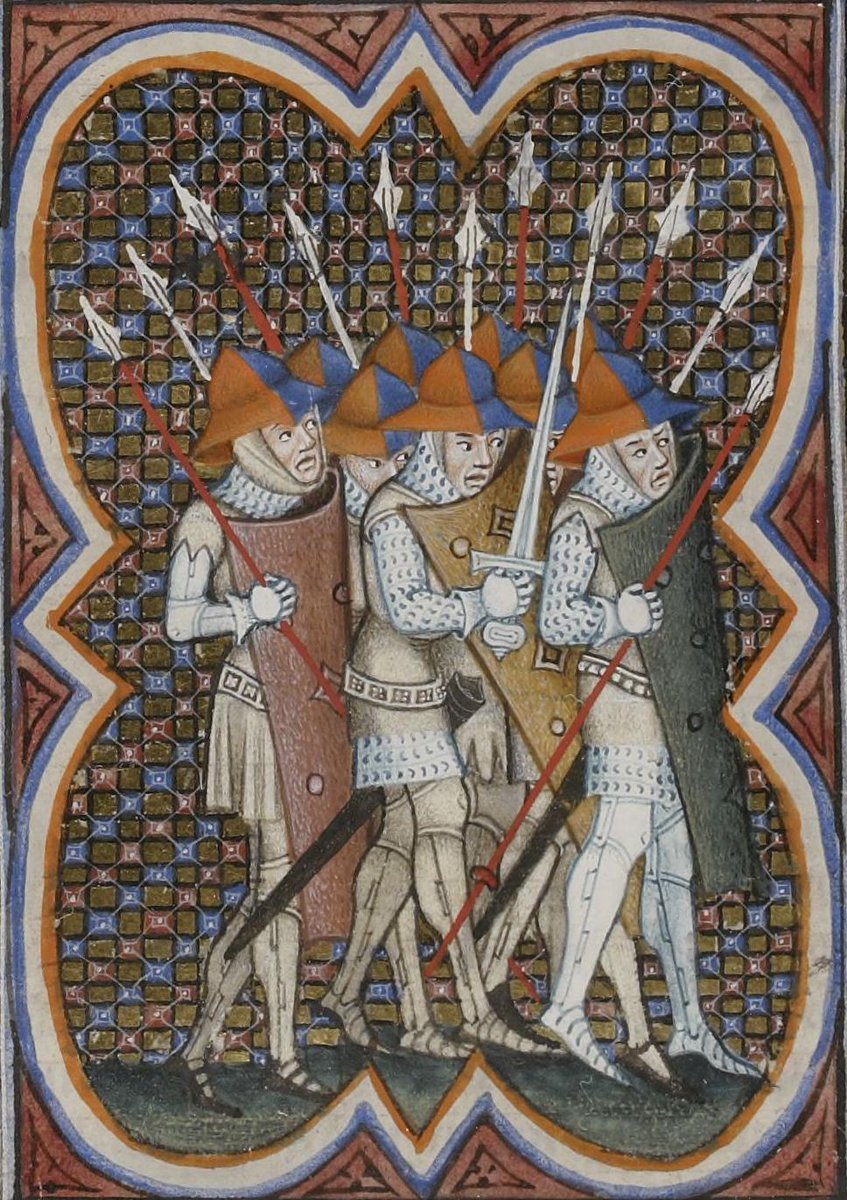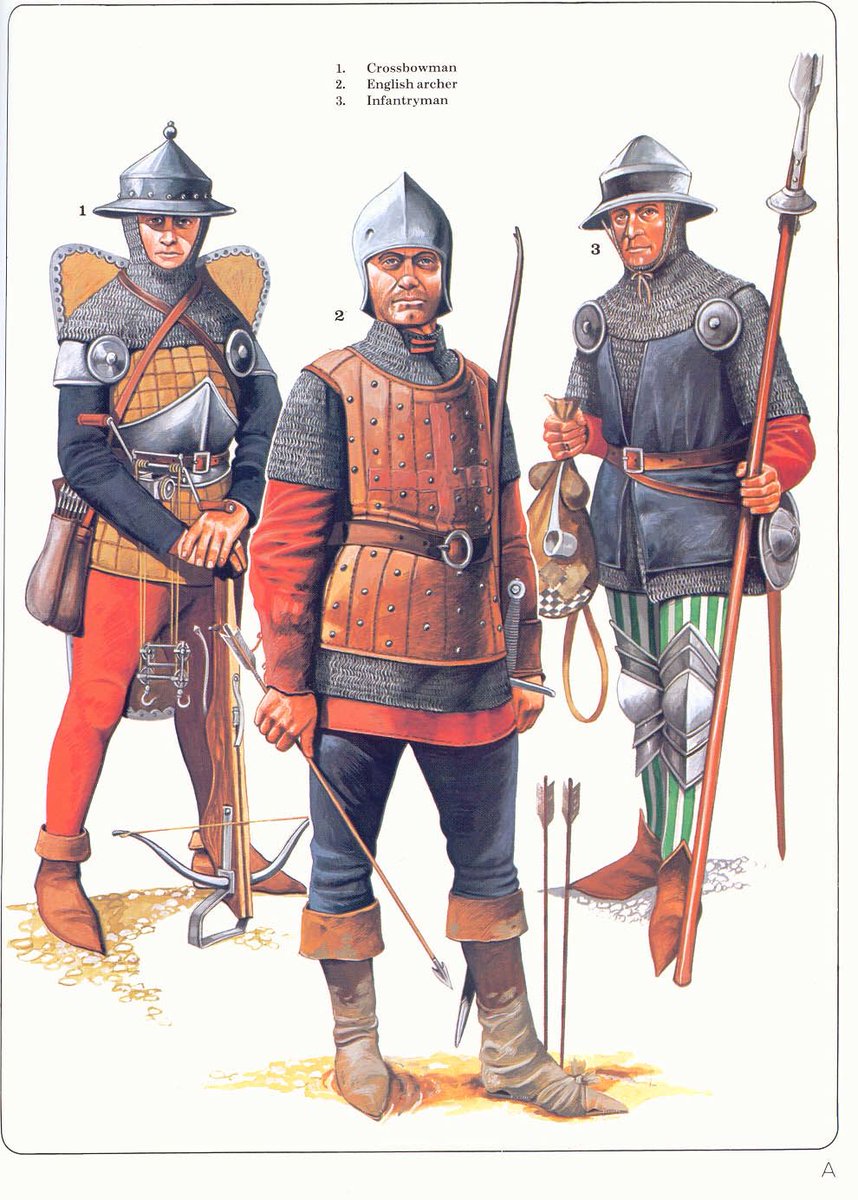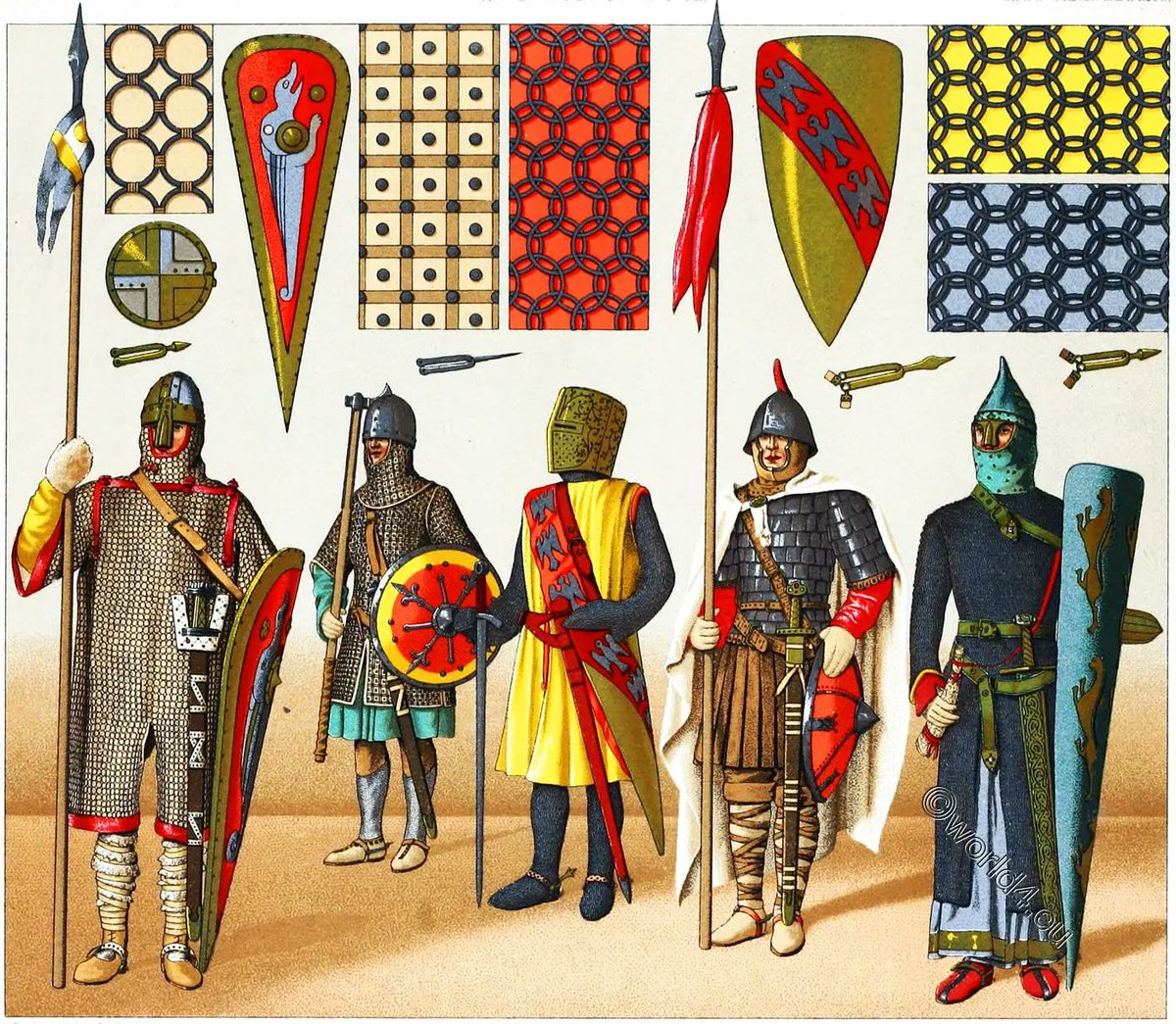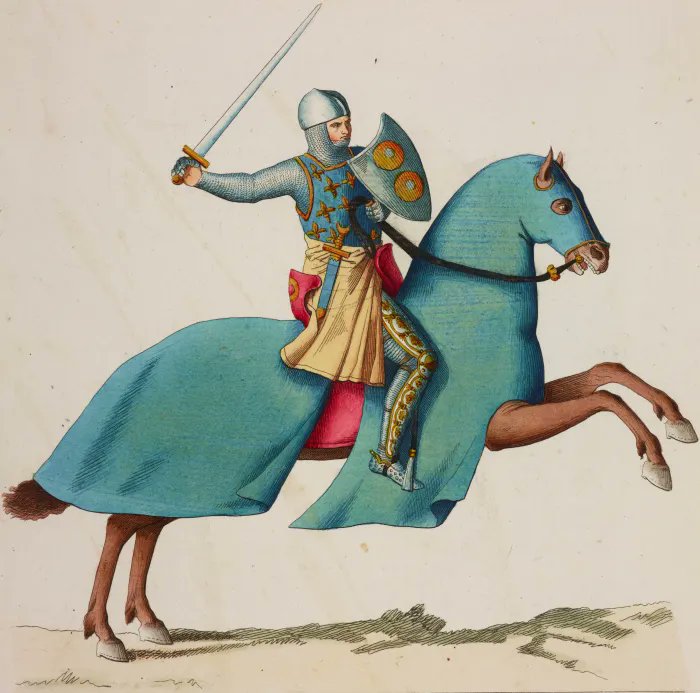One of the crucial differences between modern wars and medieval wars is that in the middle ages, warfare was generally the domain of the wealthier and upper classes, while today armies are predominantly composed of lower classes.
This is overlooked.
THREAD
This is overlooked.
THREAD
While people are aware that nobles fought in medieval wars, there is this stereotype that the bulk of the armies consisted of poor peasants who were levied and forced to fight for a society in which they had no status. But poor serfs were actually not likely to engage in wars.
The medieval armies were not just led by the aristocratic elite but even a lot of non-noble militias and mercenaries came from classes that were above that of an average peasant. An important part was played by urban militias who were from wealthy cities.
Population of prosperous medieval cities was very warlike and took pride in their militias. All kinds of combat guilds were established. These urban militias were very prestigious and wealthy people served in them. They would fight for their kings and dukes or against them.
Pope Pius II commented in 1444 on skilled urban warriors in Holy Roman Empire, "not only every noble, but even every burgher in the guilds has an armoury in his house so as to appear equipped at every alarm. The skill of the citizens in the use of weapons is extraordinary"!
Similarly the peasants who fought in medieval armies were likely of some local variety of a landowning yeoman class, a sort of middle class between nobility and serfs. People who could afford better weapons and had training. For example the famed English Longbowmen were yeomen.
So this modern idea that nobility just levied the poor peasants and put them into a meat grinder is not true and is more projecting our reality into the previous eras. People who fought in medieval wars actually generally had a stake in their society, or were mercenaries.
That& #39;s because warfare in the middle ages was very elitist. Quality of weapons and armor mattered, and gap in skills of trained professionals and insufficiently trained men was huge. The armies also had to be fed and logistics were difficult. That& #39;s why armies were small.
There would be no use in the middle ages to send massive armies of levied peasants to die for their lord. They would not give much value on the battlefield but would take away a lot from the logistics as they would have to be fed and armed. Quality over quantity was the key.
It was only with advance of technology in modern era that the masses became increasingly militarized, given a gun (easier to use efficiently than medieval weapons) and sent to battles in big numbers, while aristocracy and the elites assumed increasingly more bureaucratic role.
This escalated in the Napoleonic Wars with mass national conscription and has shaped the perception of modern people ever since as people seem to think "war was always like this" in the sense of elites cynically sending poor people to die. But it was not the case in middle ages.
After Western societies demilitarized following the Cold War we now have a situation that the armies are getting even more associated with the poor as a refuge of people who have no prospects elsewhere.
But in this way they& #39;re pretty much the opposite of medieval armies.
But in this way they& #39;re pretty much the opposite of medieval armies.
In the middle ages the armies would consist of contemporary social elite of aristocracy and also of people from the emerging entrepreneurial burgher citizen class and landowning wealthier peasantry. The elite actually fought its wars. The total opposite of today.
But I don& #39;t want it look like I& #39;m idealizing medieval warfare too much.
Wars being a domain of elite also resulted in a very dark side of medieval warfare.
I made a new thread exploring this dark side.
#darkaristocracy https://twitter.com/LandsknechtPike/status/1532903267050704897">https://twitter.com/Landsknec...
Wars being a domain of elite also resulted in a very dark side of medieval warfare.
I made a new thread exploring this dark side.
#darkaristocracy https://twitter.com/LandsknechtPike/status/1532903267050704897">https://twitter.com/Landsknec...

 Read on Twitter
Read on Twitter














